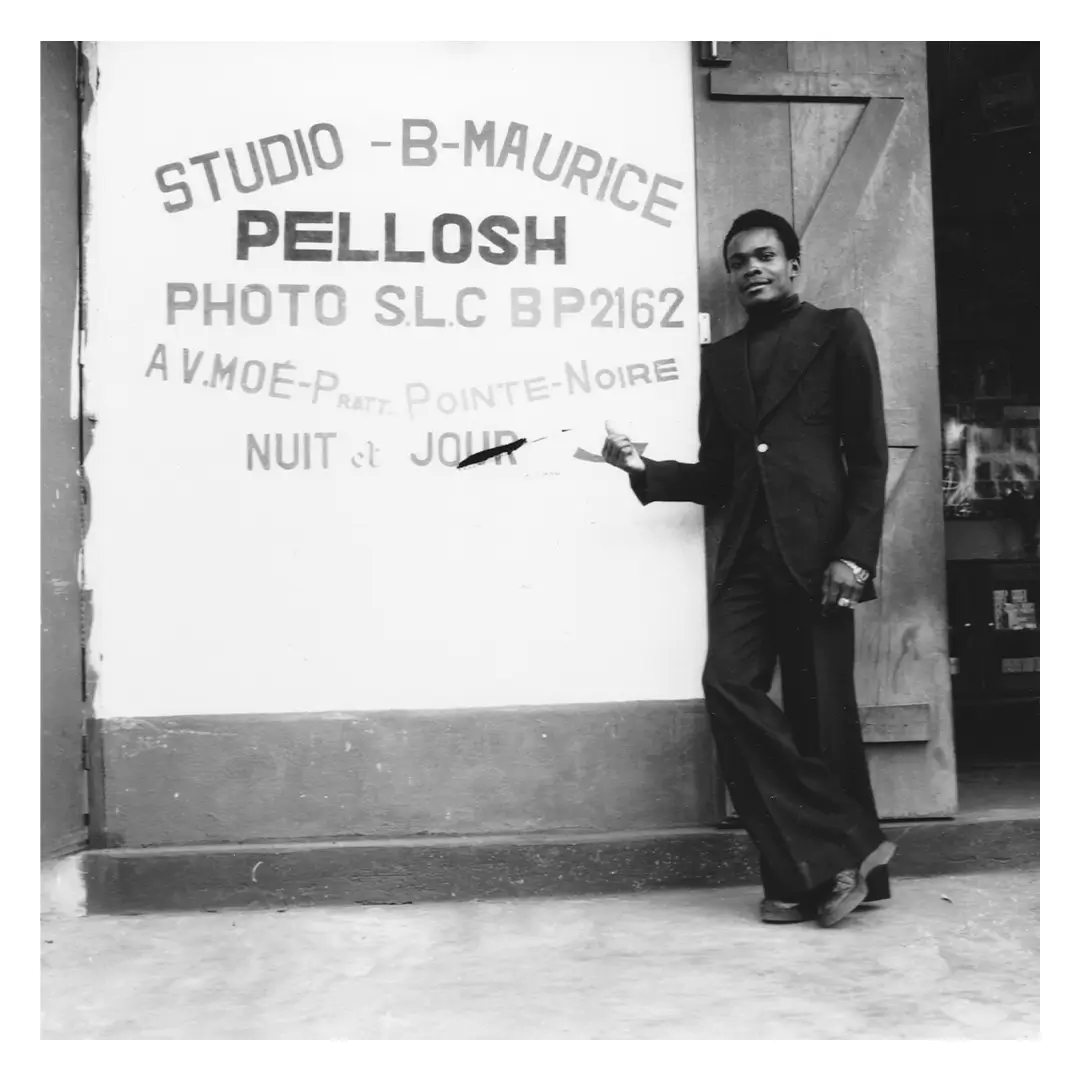Maurice Bidilou was born on August 15, 1951, in Bouansa (formerly Le Briz). At the age of 16, he moved to Pointe-Noire to live with his brother. After taking on a few odd jobs, his uncle encouraged him to learn a trade. This led Maurice to a 19-month apprenticeship at "Studio Jeanot Père," which he began in exchange for a bunch of bananas, a demijohn of wine, a chicken, and 20,000 CFA francs. During this time, he mastered the art of being a portrait photographer, a craft that would become his lifelong passion.
At the time, it was fashionable to have a nickname. Maurice explained that around the age of 11, he played with letters and came up with the word "Pellosh," giving it an American-sounding ending. Long before becoming a photographer, his friends and family were already calling him Pellosh—a name that seemed to foreshadow his destiny. [NB: In French, the word péloche (which sounds the same as Pellosh) means "film."]
In December 1973, Maurice Bidilou opened his own photo studio, "Studio Pellosh," near the main market in a bustling neighborhood. The studio remained open until 2016. It quickly became a success. In addition to offering traditional ID photos, "Studio Pellosh" gained a reputation as the go-to place for families, couples, friends, and "sapeurs" eager to immortalize their happiness and symbols of success on film.
In the evenings, Pellosh frequented bars, dance halls, and concerts, mingling with the Congolese youth reveling in their newfound independence. Across from Studio Pellosh, the bar-dancing club "Chez Fofo" became his favorite weekend hangout.
During the 1970s, the Sape movement—The Society of Ambiance-Makers and Elegant People—was in full swing. The clientele of Pointe-Noire sought carefully crafted souvenir portraits to share with loved ones, often ordering enlargements. These photos became elaborate compositions featuring symbolic accessories of wealth (transistor radios, mopeds, books, cigarettes) and beauty (bags, sunglasses, hats, suits). Artificial lighting allowed for photography at any time of day or night.
Starting in 1985, the disappearance of black-and-white development products in Congo forced Pellosh to transition to color photography. A decade later, the rise of digital photography signaled the inevitable end of his studio.
Maurice passed away on May 25, 2023, surrounded by decor from his former studio, dozens of Kodak boxes filled with negatives, and photographic equipment. His death, at the age of 71, was caused by severe malaria and a hip fracture.
He leaves behind his wife, Jackie, and their six daughters—Mauricette, Aude, Inès, Alida, Ghéraude, and Carmelle—as well as 17 grandchildren, all of whom are proud and dedicated to preserving Maurice’s legacy. Since 2020, this work has been championed by Emmanuèle Béthery, who has brought new recognition to Maurice's artistry.
